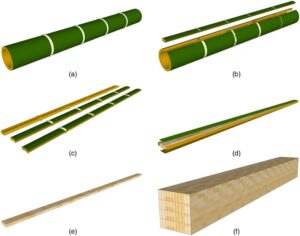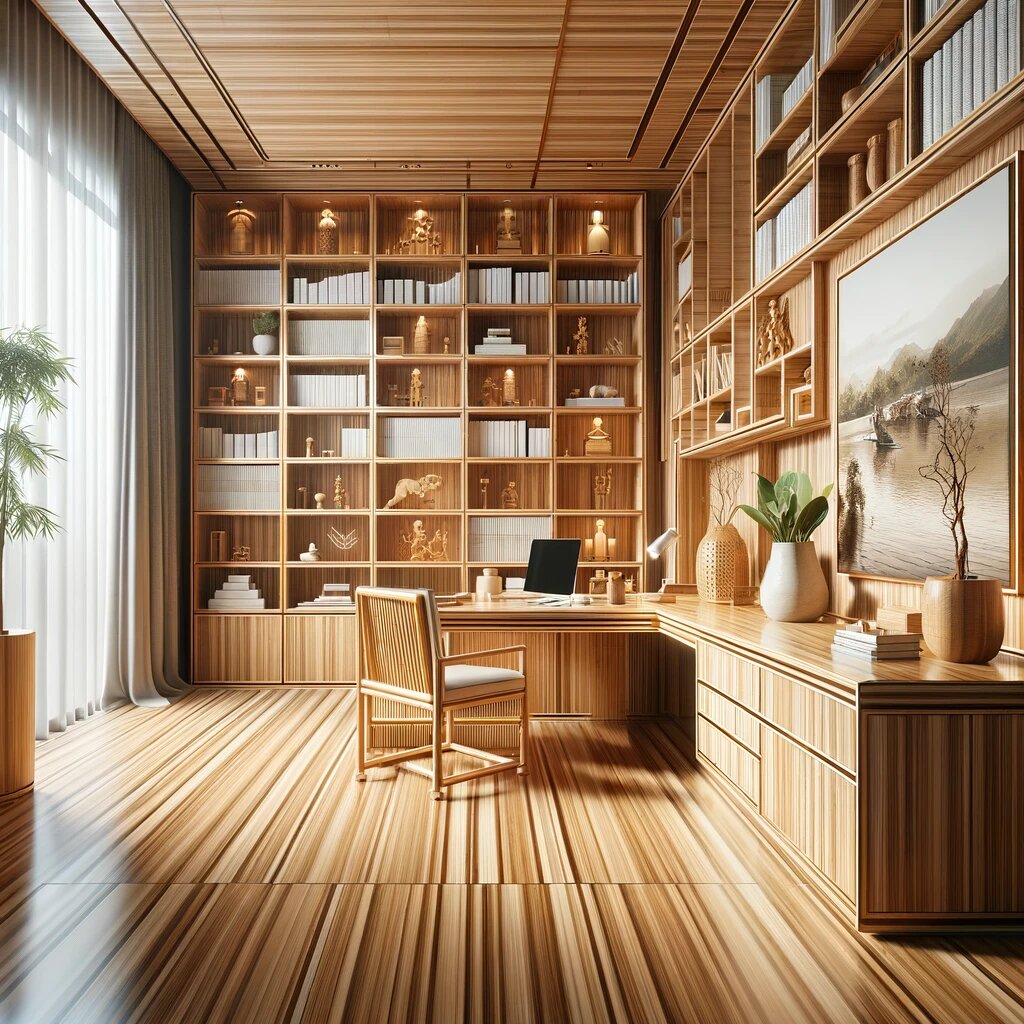Laminated bamboo lumber is quickly becoming a favored material in both construction and home décor, recognized for its strength, sustainability, and striking appearance. As a grass that regenerates quickly, bamboo offers an eco-friendly alternative to traditional hardwoods, yet it shares many of the same desirable traits, such as durability and versatility in design. However, like all wood products, laminated bamboo requires the right finish to protect its surface and extend its lifespan while highlighting its natural beauty.
In this blog post, we will explore the best types of finishes for laminated bamboo lumber, offering tips on how to apply these finishes for optimal protection and longevity. We’ll delve into the advantages and disadvantages of various finish types, provide practical application tips, and discuss maintenance practices to keep your bamboo surfaces looking great. By the end of this article, you will be equipped with the knowledge to choose and apply the right finish for your bamboo projects, ensuring durability and enhancing aesthetic appeal.
Understanding Laminated Bamboo Lumber

Laminated bamboo lumber is an engineered product made by bonding layers of bamboo strips under high pressure and heat, which results in a highly durable and stable material. This process amplifies the natural strength of bamboo, making it suitable for a wide range of applications including flooring, cabinetry, and furniture. One of the key benefits of laminated bamboo is its environmental impact; bamboo grows much faster than traditional woods and absorbs carbon dioxide at a higher rate, making it an excellent choice for green building projects.
Types of Finishes for Bamboo Lumber
Oil-based Finishes
Oil-based finishes penetrate deeply into the wood, enhancing the color and grain pattern while providing robust protection against moisture and wear. Products like Tung oil and linseed oil are popular choices that offer a rich, natural look, though they can take longer to dry and may require more maintenance over time.
Water-Based Finishes
These finishes are favored for their low odor, quick drying times, and minimal VOC emissions. Water-based polyurethanes are particularly good for bamboo because they retain the wood’s color and resist yellowing over time. They are easier to clean up and reapply but may not penetrate as deeply as oil-based finishes.
Wax Finishes
Wax provides a soft, matte finish that can enhance the tactile feel of bamboo surfaces without significantly altering its appearance. While not as protective as polyurethanes or oils, wax is easy to apply and can be buffed to a subtle sheen, making it ideal for decorative pieces that aren’t exposed to heavy wear.
Environmental and Health Considerations
Volatile Organic Compounds (VOCs)
VOCs are organic chemicals that have a high vapor pressure at room temperature. High VOC levels in finishes can lead to air quality degradation, which may cause health issues such as headaches, dizziness, visual disorders, and memory impairment. Environmentally, VOCs contribute to ozone formation, leading to potential air pollution and smog.
Many modern finishes now offer low-VOC or VOC-free formulations. These products significantly reduce the risks to both personal health and the environment. Water-based polyurethanes and certain types of oils like tung oil modified with natural resins are examples of low-VOC finishes suitable for bamboo lumber.
Biodegradable and Renewable Resources
Consider finishes that are made from renewable or biodegradable materials, which lessen the environmental footprint from production to disposal. Natural oils, such as linseed or tung oil, are derived from renewable sources and are biodegradable, making them an environmentally friendly choice.
Certifications and Standards
Products certified by organizations like GREENGUARD or EcoLogo meet strict chemical emissions standards, offering assurances beyond basic regulatory compliance. These certifications help consumers easily identify products that are safer for both indoor air quality and the environment.
Compliance with local, national, and international regulations, such as the U.S. Environmental Protection Agency (EPA) or the European Union’s REACH regulations, ensures that the finishes adhere to safety standards minimizing their environmental and health impacts.
Application Tips for Best Results
Proper application is crucial for achieving a durable and attractive finish. Begin by ensuring that the bamboo surface is clean, dry, and smooth. Sanding the surface with fine-grit sandpaper can help remove imperfections and enhance finish adhesion. When applying the finish, use a clean brush, roller, or sprayer, and apply thin, even coats. Between coats, allow adequate drying time as specified by the product’s instructions, and lightly sand to ensure a smooth finish. Always work in a well-ventilated area to ensure safety and the best drying conditions.
Maintenance and Care
Maintaining your finished bamboo surfaces involves regular cleaning with a non-abrasive cloth and mild, bamboo-friendly cleaners. Avoid harsh chemicals that can strip the finish. For surfaces experiencing frequent use, such as floors or countertops, apply a fresh coat of finish every few years or as needed to prevent wear and moisture damage. For light scratches, a touch-up kit designed for bamboo can conceal damage effectively.
Troubleshooting Common Issues
Even with the best application practices, issues such as peeling, blistering, or discoloration can occur, often due to moisture exposure or improper application. If the finish peels or becomes discolored, gently sand the affected area and reapply the finish. For water marks, apply a small amount of oil or wax and buff the area to blend the marks into the surrounding finish. If problems persist, consulting a professional may be your best option to ensure the longevity of your bamboo surfaces.
Conclusion
Choosing the right finish for laminated bamboo lumber is essential for protecting and enhancing this beautiful, sustainable material. By understanding the different types of finishes available and how to properly apply and maintain them, you can ensure that your bamboo surfaces remain durable and attractive for years to come. Whether you are a DIY enthusiast or a professional builder, the right finish will not only protect your investment but also showcase the natural elegance of bamboo lumber.
We encourage you to share your experiences and insights on finishing bamboo lumber in the comments below or to reach out to us at Coastal Custom Products for further advice and assistance!



